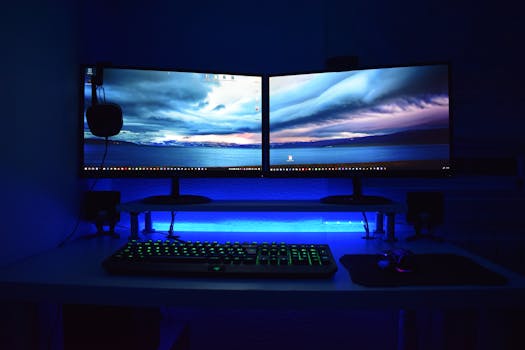IPS vs VA vs OLED: Which Monitor Panel Should You Buy?
9/9/2025 · Monitors · 8 min

TL;DR
- IPS: Best color accuracy and viewing angles. Great for creators and general use. Typical contrast is lower than VA.
- VA: Highest native contrast for deeper blacks and better HDR shadow detail. Good for movies and dark-room users, but can show more motion smoothing.
- OLED: Best contrast, perfect blacks, and excellent color. Fast pixel response. Risk of burn-in and usually higher cost.
Color & Accuracy
- IPS: Superior out of the box color and wide color gamut. Easy to calibrate to sRGB or DCI-P3.
- VA: Colors can be punchy but sometimes inconsistent across the panel. Calibration helps.
- OLED: Exceptional color depth and wide gamut. Ideal for color-critical work if you avoid static UI elements.
Contrast & Blacks
- IPS: Typical contrast ratio around 1000:1. Blacks look gray in dark rooms.
- VA: Native contrast often 2000:1 to 6000:1. Deep blacks and strong HDR shadow detail.
- OLED: Infinite contrast because pixels turn off. Best black levels and HDR highlights.
Response Time & Motion
- IPS: Good pixel response, low overshoot on modern panels. Great for fast-paced gaming.
- VA: Slower pixel transitions can yield more motion blur and ghosting, but some modern VA panels are improved.
- OLED: Extremely fast pixel response with minimal blur and no backlight strobe needed.
Brightness & HDR
- IPS: Good peak brightness on high-end models; local dimming is rare in traditional IPS LCDs.
- VA: Often higher sustained brightness and better perceived HDR due to contrast.
- OLED: Superb contrast but peak brightness can be lower than the brightest LCDs; HDR tone mapping matters.
Viewing Angles
- IPS: Best viewing angles with minimal color shift.
- VA: Noticeable color and contrast shift off center.
- OLED: Excellent viewing angles, similar to IPS.
Burn-in & Longevity
- IPS and VA: No burn-in from static content.
- OLED: Vulnerable to image retention and burn-in with prolonged static UI elements. Modern panels have mitigation features, but risk remains.
Price & Availability
- IPS: Widely available across budgets and sizes.
- VA: Common in midrange monitors, especially for high contrast and curved screens.
- OLED: Premium pricing and limited sizes. More common in laptops and TVs than monitors, but that is changing.
Which Should You Buy?
- Choose IPS if you prioritize color accuracy, editing, and wide viewing angles.
- Choose VA if you watch a lot of movies in a dark room or want deep blacks on a budget.
- Choose OLED if you want the best contrast and motion performance and can accept higher cost and some burn-in risk.
Quick Buying Checklist
- Usage: gaming, content creation, movie watching, or mixed.
- Ambient light: dark rooms favor VA and OLED; bright rooms work well with bright IPS models.
- Static UI exposure: avoid OLED if your workflow has many static elements like HUDs or toolbars without taking precautions.
- HDR needs: VA or OLED will often provide a more impressive HDR experience.
- Budget: IPS and VA cover most price points; OLED sits at the premium end.
Bottom Line
There is no single best panel. IPS is the safest choice for creators and general users. VA gives the best blacks for movie fans on a budget. OLED is the top performer for contrast and speed but comes with higher cost and burn-in considerations. Match the panel to your use case and viewing environment.
Found this helpful? Check our curated picks on the home page.